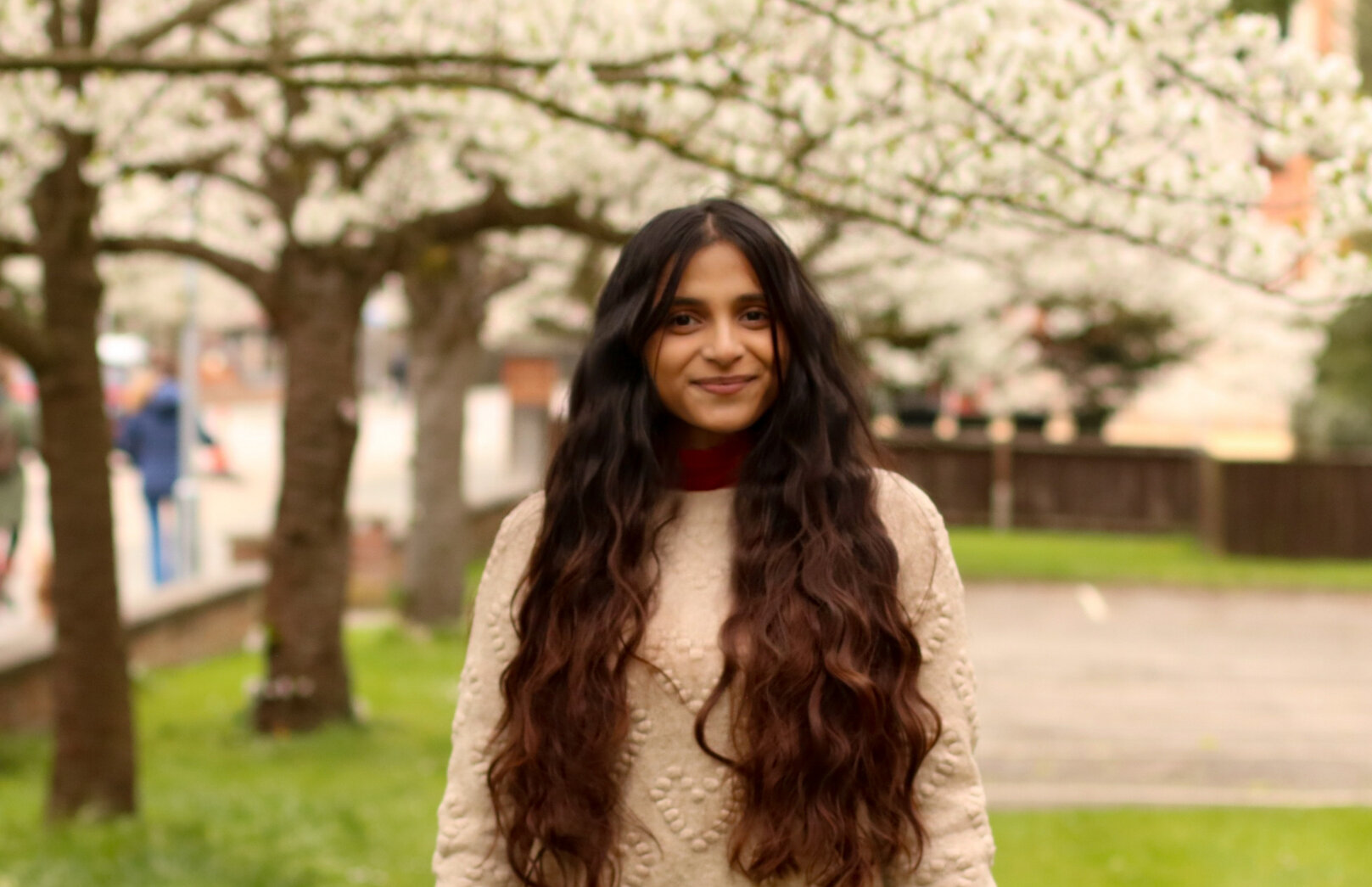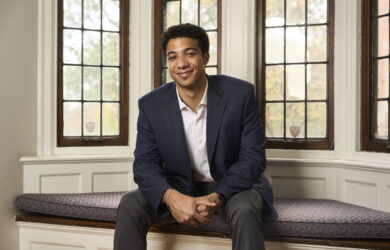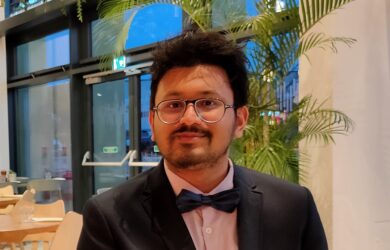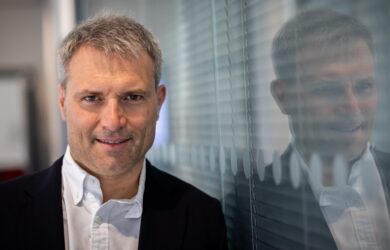
Anwesha Lahiri on tackling the health data gap when it comes to cardiovascular disease and diabetes in South Asia
Identification of risk factors in East, Southeast and South Asian populations is pivotal for strengthening health systems and disease prevention.
Anwesha Lahiri
When Anwesha Lahiri [2021] was doing her master’s fieldwork in India, she visited a tribal village in a remote area on top of a mountain between two districts. Only around 500 people lived there and there was no proper road leading to the village. At the heart of the problem was the dangerous ascent needed to access it. Its inaccessibility coupled with bureaucratic problems meant that the villagers were cut off from essential services like clean water, electricity and healthcare.
Anwesha’s job was to carry out health checks on the children. At the local Anganwadi (rural childcare centre), she discovered a girl with cerebral palsy. No-one in the village knew what it was and the girl had received little treatment since birth. No medical team had visited the village – the only way for a doctor to see her was for her parents to undertake a formidable trek downhill, carrying her on a bamboo stretcher. When she dug deeper, Anwesha found that a number of other villagers had congenital health-related issues (in addition to widely prevalent malnutrition) resulting in problems ranging from blindness to paralysis.
Through one of her supervisors, a medical team was dispatched to the village and the girl was taken to hospital for psychiatric care, her case already terminal given that she was in the second decade of her life and had had little treatment. Anwesha says: “I realised how much work was required in terms of public health and how much data was lacking in places like this. That left an indelible mark on me. It is my career goal to address it.”
Anwesha, who began her PhD in Medical Science at Cambridge in the autumn, is looking to tackle the health data gap when it comes to cardiovascular disease and diabetes which are increasing fast in South Asia.
Childhood and early years
Anwesha has always had an interest in health. Born into a family of doctors – her father is a cardiologist and her mother is a nephrologist – she says she grew up looking at the world through the experiences of patients in resource-poor settings and with a keen awareness of India’s health burden.
Anwesha was born in a small town in West Bengal and moved to Kolkata when she was seven. Her mother worked in a public hospital treating people with chronic illness and Anwesha would often accompany her and observe her work. It gave her an early appreciation of the challenges facing public health in India. “I saw my mum treating patients who didn’t have hospital beds. Instead they were routinely on makeshift mattresses on the floor,” she says. “My mum would prescribe medicine to people who did not have enough to eat. People who needed a kidney transplant would need to sell their houses or their land to be able to afford it. That was always on my mind and influenced my choices at university.”
Undergraduate studies
Anwesha was torn between studying medicine or public health. At school she was very interested in statistics and in looking at data and inferring patterns from it. She chose an in-between path – biotechnology – which would give her an understanding of the molecular basis of disease. In her second year of undergraduate studies, she explored the proteomics of non-severe vivax malaria while interning at the Indian Institute of Technology Bombay- something which led to the discovery of diagnostic biomarkers that are crucial for ensuring that people get the right type of treatment. It was her first experience of research and it triggered a deep interest in understanding the biological systems that contribute to infectious diseases such as malaria and multi-drug resistant tuberculosis which are big health challenges in India.
Inspired in part by her early experiences of seeing life in the slums of Kolkata, Anwesha joined a community service club at university and by her second year was president. It offered financial and technical support in areas such as human trafficking and public health and involved travelling to hard-to-reach remote areas and taking part in health and literacy campaigns. Anwesha says her voluntary work exposed her to practical problems and convinced her there was a gap in the data especially around chronic disease which meant that scientific research was not having the impact it needed to have.
Master’s work
She finished her undergraduate degree in 2017 and knew that she wanted to do something interdisciplinary that would tackle public health issues. “I was never afraid to ‘tailor make a career’”, she says. “I wanted to shift from traditional wet-lab research to statistical approaches in disease risk prediction that can influence public health programming.” There were not many institutions offering postgraduate courses in public health in India so she chose to do a master’s in engineering at the Indian Institute of Technology Bombay which she hoped would help her to bridge the gap between science and practice, given it relied on extensive fieldwork.
As part of that fieldwork, she had to travel to several remote tribal villages in Maharashtra state, live with families there and participate in their everyday life so that she could understand the public health challenges they were facing from different angles. For instance, she investigated how fortified nano micronutrient supplements could help women and children with anaemia. They are routinely prescribed prophylactic doses of iron and folic acid tablets, but there is little compliance due to the adverse gastrointestinal side effects, risk of infection and prevailing myths around the consumption of such tablets. Additionally, dietary patterns in India – especially tribal India – are characterised by the high intake of phytates and oxalates and low bioavailability of iron from non-haem [plant-based] sources, all of which contribute to poor absorption of iron.
Anwesha’s work involved looking at how new approaches might be accepted by the community. Her group created a formulation containing iron folate and vitamin C [which helps iron to be absorbed by the body] that could be added to people’s regular food, for instance, if fish was a staple of the diet, the formulation could be added to a fish soup powder. Anwesha says: “It really opened my eyes to what public health could be. There is the science of iron-deficiency anaemia, iron bioavailability, absorption profiles and nano-fortification; and then the whole public health challenge aspect of how you actually make sure that communities are able to accept your solution.”
From UNICEF to Cambridge
After her master’s Anwesha worked for a year as a research fellow for UNICEF India, which she says gave her “a big picture view” of adolescent and maternal and child health. It also showed her how research could translate into policy. Her work focused on understanding socioeconomic and behavioural determinants of health and resulted in two recent Lancet publications*. The job carried a high workload and Anwesha was expected to deliver quick results, but it gave her new insights into the importance of data for action on the ground, and she thoroughly enjoyed conducting research in collaboration with the ministries of health, government advisory bodies and think tanks.
The experience on her master’s had also shown her that she needed more expertise in epidemiology. So after she started the UNICEF job she applied to Cambridge to do an MPhil with the MRC Epidemiology Unit. In her MPhil thesis, she worked under the supervision of Professor Nita Gandhi Forouhi to study how plasma phospholipid trans fatty acids could contribute to cardiometabolic disease risk in the UK.
Gates Cambridge
For her PhD she applied for a Gates Cambridge Scholarship and is active in the community, taking on the role of Vice President of the Gates Cambridge Scholars Council. She has also been very active in a variety of other Cambridge circles, for instance, she served as Ethnic Diversity Officer at Trinity Hall last year. In addition, she has been active in addressing both Covid and higher education access. Last year when India was going through the devastating delta wave of Covid, she co-led a fundraising initiative with student societies at Oxford and Cambridge which raised over 50k pounds for Indian charities to support Covid relief work. And she is currently Programme Lead for a non-profit initiative, Project EduAccess, which is primarily a student-run initiative that aims to improve access to higher education for learners from marginalised communities in South Asia.
When it comes to her PhD, the focus is on the importance of modifiable risk factors in mitigating cardiometabolic disease risks in South Asia. It aims to inform country-specific policies and disease prevention strategies. Anwesha is drawing on the South Asia Biobank (of over 100,000 South Asians) and the UK Biobank and studying what the data says specifically about nutritional risk factors, metabolomic variations in relation to nutrition, genetic variants of the observed metabolic signature and their association with risk of diabetes and cardiovascular disease.
Anwesha says that most health guidance comes from Western research, but that South Asia carries a disproportionate burden of cardiometabolic diseases linked to nutritional and lifestyle behavioural transitions, greater insulin resistance and genetic and epigenetic influences, which are exacerbated by inequalities in access to healthcare and require more investigation. “There has been a shift in the global epicentres for cardiometabolic risk factors from high-income Western populations to East, Southeast and South Asia in recent times,” she says. “The projections for diabetes and cardiovascular disease in this population are alarming down the line, but there aren’t enough studies to understand the strategies for prevention. Public health systems in these countries are already crippled by a persistent burden of undernutrition and infectious diseases and are not equipped to deal with an emerging epidemic of chronic diseases. Identification of risk factors in these populations is pivotal for strengthening health systems and disease prevention.”
*Anwesha’s two publications in The Lancet are on food choice in transition and strategies and interventions for healthy adolescent growth, nutrition and development.












